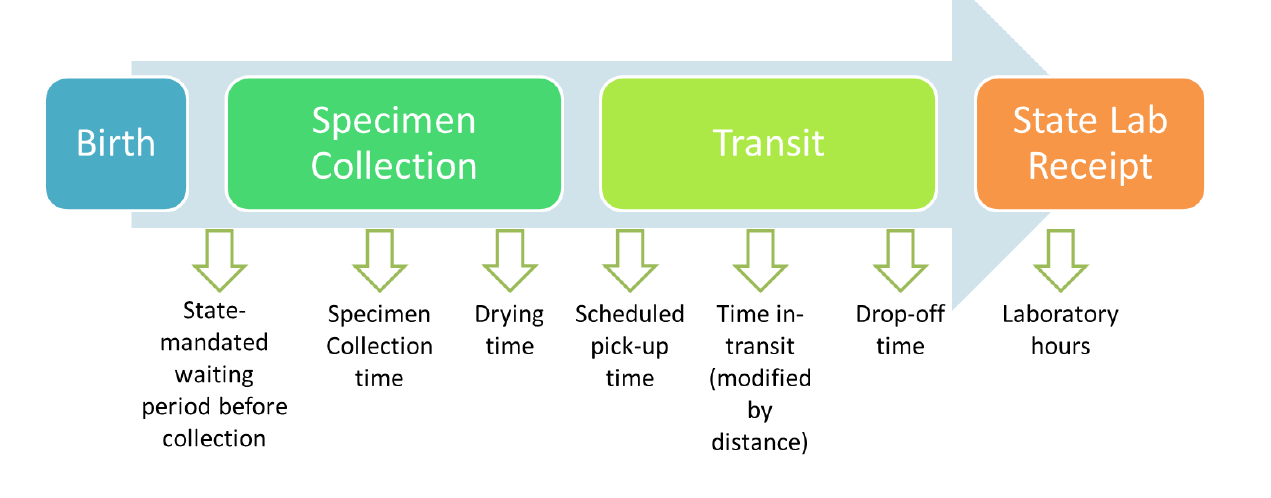Newborn Screening Timeliness Simulator

In partnership with NewSTEPs 360, Drs. Beth Tarini, Amy Cochran and Gabriel Zayas-Caban with the support of their research team (Anne Atkins and Brianne Miller) developed a Newborn Screening (NBS) Timeliness Simulator that allows NBS programs and hospitals to evaluate the time it takes dried blood spot specimens to reach the state public health laboratory from the time of birth. Programs can replicate the simulation used in the Newborn Screening and Delivery Processes in Michigan Birthing Hospitals: Strategies to Improve Timeliness (Cochran, Tarini, Kleyn, et al., 2018) or use their own state data (aggregate or hospital-level).
Users can experiment by changing variables related to collection time, courier pick-up times, and laboratory hours to see how these changes affect timeliness! NBS programs can compare findings to determine where in the collection and delivery processes causes delays and identify strategies to make improvements for timely laboratory receipt. For more information on how to use the tool, please consult the tutorial provided at the top of the information page. If you have any questions, please contact Sarah McKasson.
The Newborn Screening Timeliness Simulator was developed by researchers at the University of Iowa and the University of Wisconsin-Madison with support from the Center for Public Health Innovation (CPHI) as part of the NewSTEPs 360 grant. The resource is supported by the Health Resources and Services Administration (HRSA) of the U.S. Department of Health and Human Services (HHS) as part of an award totaling $5,400,000 with 0% financed with non-governmental sources. The contents are those of the authors and do not necessarily represent the official views of, nor an endorsement, by HRSA, HHS, or the U.S. Government.
This resource is based on prior work funded by the Robert Wood Johnson Foundation through the National Coordinating Center for Public Health Services and Systems Research, ID 72453. The views expressed here do not necessarily reflect the views of the Foundation.